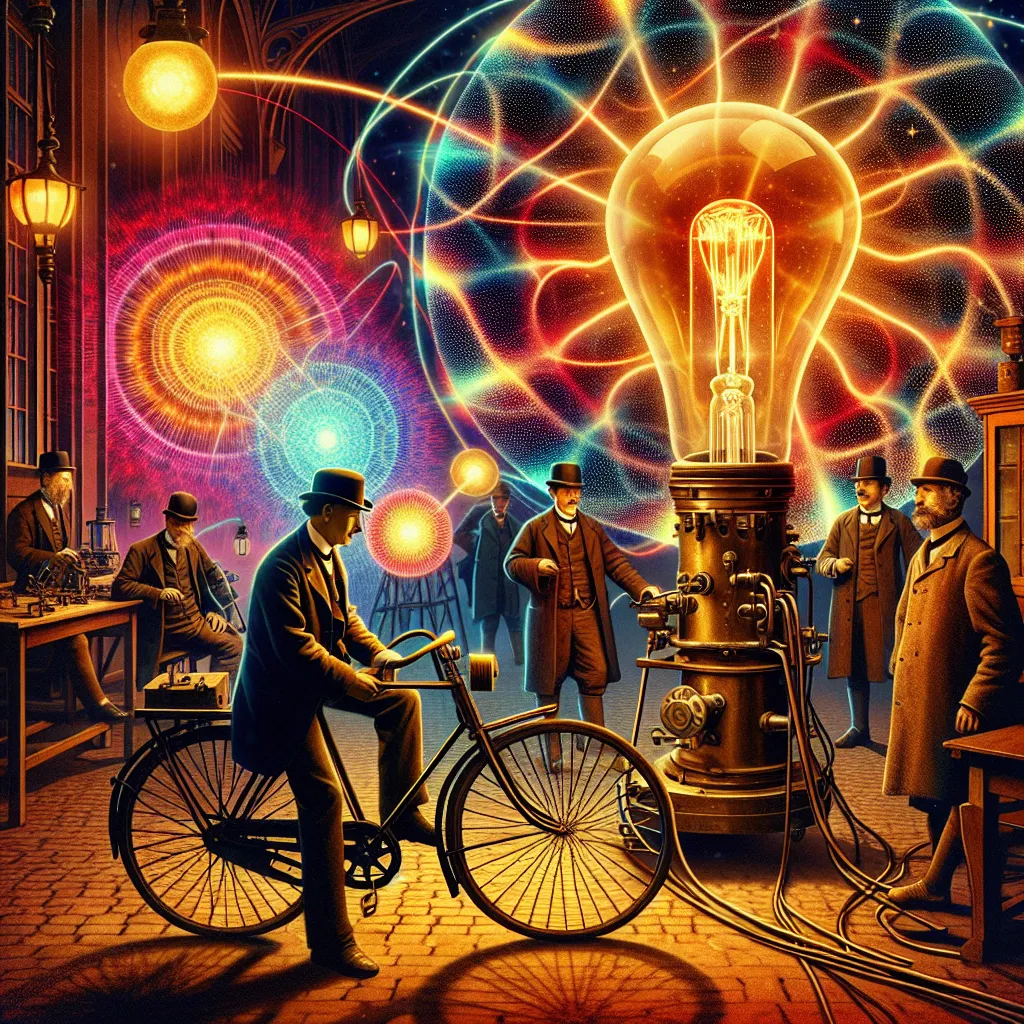Amid the hustle and bustle of our daily lives, the rules of our universe feel pretty straightforward: a bridge will hold us up, water flows downhill, and when you chuck a stone, it follows a predictable path through the air. However, dive deeper into the tiny fabric of matter, and all that certainty vanishes. Welcome to the wild world of quantum mechanics, where the universe flips the script and nothing is as it seems.
About a hundred years ago, some of humanity’s brightest minds embarked on a journey into the strange. They discovered that in the realm of the very small, things can be in multiple places at once. The fate of these particles is dictated by chance, and reality itself can be confounding. What we thought we knew about the world might be mostly wrong.
This tale of scientific madness kicks off in an unlikely place—Berlin in 1890. Back then, Germany was buzzing with industrial dreams. Engineering firms bet big on Edison’s light bulb, seeing a gold rush in street lights for a booming German Empire. Yet, the light bulb sparked something greater: the birth of quantum mechanics.
Fast forward to 1900, and a peculiar problem with light bulbs puzzled engineers. They knew heating the filament with electricity made it glow, but the exact science behind this was a mystery. The changing color of the light as the filament got hotter was especially baffling. To solve this, Germany invested in a new technical research institute called PTR and brought on a sharp scientist named Max Planck. His simple task? Figure out why the light’s color changes with temperature.
To grasp this, let’s hop on a bike with an old-fashioned lamp. The faster you pedal, the more electricity is produced, and the hotter the lamp’s filament gets. It doesn’t just get brighter; the color shifts from red to orange to yellow. At peak speed, the color stays yellowish-white. The question is, why not blue?
Planck and his team built a black body radiator to study this. Heating the radiator to precise temperatures, they noticed it glowed different colors, much like our bike lamp. But as the filament got hotter, it maxed out at a bright white—no significant blue light, and very little ultraviolet. They called this conundrum the “ultraviolet catastrophe.” Planck found a precise mathematical link between the light’s color, its frequency, and energy. Still, he couldn’t fully explain why.
Enter Albert Einstein in 1905. Known for his theory of relativity, Einstein also proposed a radical idea that light isn’t just a wave—it could also be thought of as particles, called quanta. This explained the photoelectric effect, where light knocks electrons off a metal surface, yet higher frequency light like blue or ultraviolet did this much more effectively than red light. Einstein argued that each light particle carried energy, with higher frequency light particles packing more punch.
Despite solving some mysteries, Einstein’s theory left physicists grappling with a paradox. Light was definitely behaving as both a wave and a particle. The deeper scientists dug, the weirder it got. They devised quantum mechanics, a theory that defied common sense yet explained these bizarre observations perfectly.
Einstein wasn’t thrilled. He famously quipped, “Does the moon cease to exist when I don’t look at it?” He believed there had to be an underlying theory more palatable than quantum mechanics’ idea that reality doesn’t exist until observed.
The debate raged on, culminating in a scientific showdown. John Bell, a physicist from Belfast, formulated a way to settle it. He proposed an experiment that would test whether the spooky action at a distance—instantaneous communication between particles regardless of distance—favored Einstein’s view of a predetermined reality or Neils Bohr’s quantum interpretation.
Experiments in the 1970s and 80s finally confirmed it: Einstein was wrong. Quantum mechanics was right. Particles didn’t have fixed properties until measured, and they could instantaneously communicate across space—defying our usual understanding of reality.
Even though quantum mechanics flies in the face of common sense, it has sparked technological revolutions—lasers, semiconductors, and nuclear power, to name a few. Today, quantum mechanics is pushing the frontiers of technology even further: think unbreakable computer security, groundbreaking communication systems, and ultra-fast computers.
The weirdness of the quantum world keeps dazzling and perturbing scientists. It’s a realm where the questions are as thrilling as the potential answers. As we hurtle deeper into this quantum era, one thing is clear: there are still profound truths and discoveries yet to be unveiled, making the exploration of the quantum universe an unending adventure.






